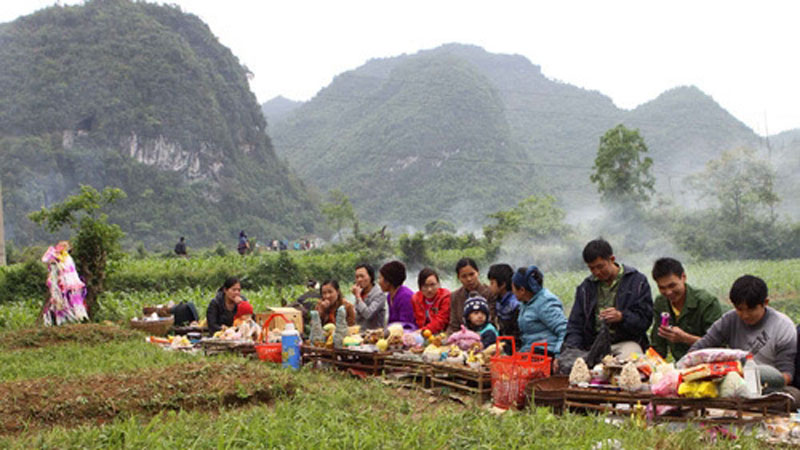



One day ahead of the festival, each family prepares a tray of offerings, the more number of households the family has, the more abundant their offerings will be.
In the northern province of Cao Bang, from early in the morning of the opening day, people flock to the hillsides and mountain sides, where the graveyard and cemeteries are located, carrying their offerings, such as boiled chicken, pork, fruits, votive papers, eggs, wine, and coloured sticky rice, including the two indispensable colours of black and red.
The colours of the sticky rice are made from leaves grown in the locales’ gardens. Not only producing natural and eye-catching colours, the leaves also bring a distinctive aroma to the dish.
As a celebration to pay tribute to the dead, the villagers also clean up and burn incense for unmarked graves during the festival.
After the visiting ritual, the family members gather together to enjoy the offerings and hold exchanges with other families.
At the end of May, the Hoa Binh Provincial Ethnic Arts Troupe organized a series of performances for residents in Region 2 and Region 3 communes across the province. Bringing art to ethnic communities in remote, isolated, and especially disadvantaged areas has become a meaningful activity. These are not merely artistic performances but also journeys to disseminate cultural values, enrich spiritual life, and contribute to preserving the cultural identity of ethnic minorities.